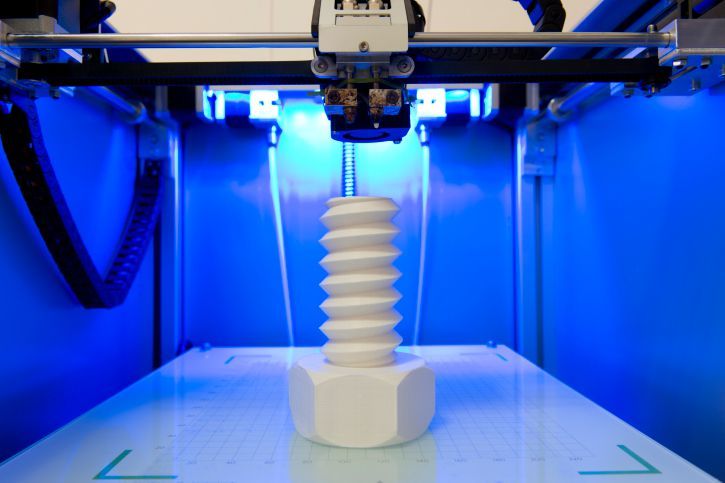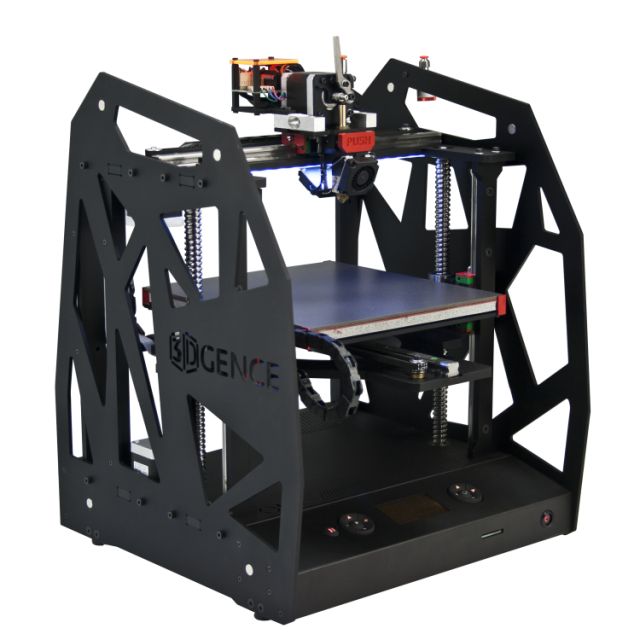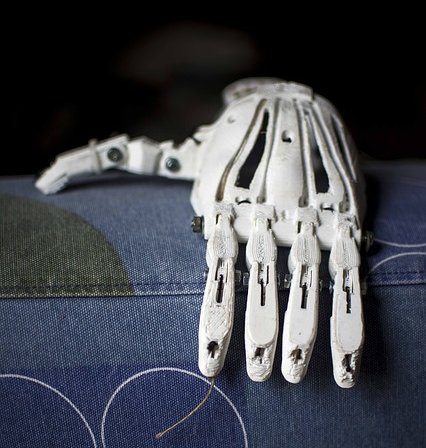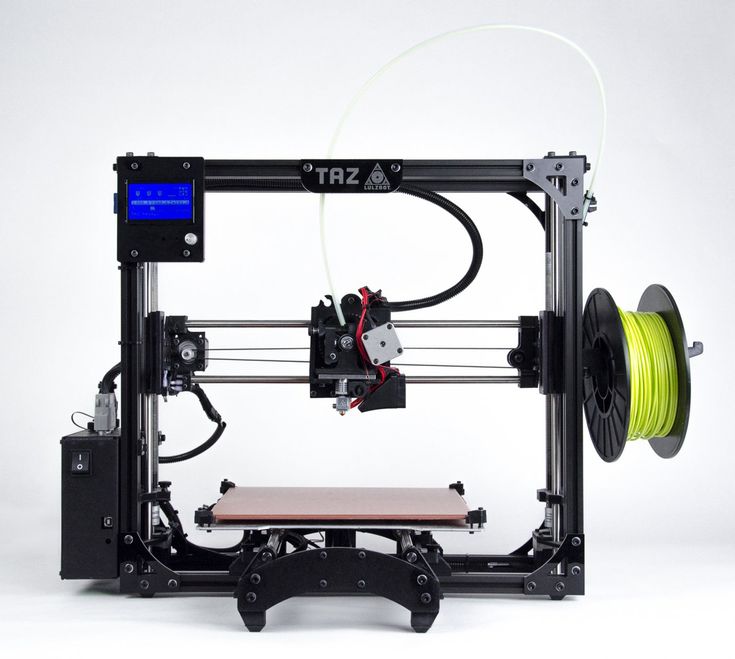Where to find 3d printer designs
Best Websites to Download Free STL Files
Published on March 17, 2020 by Jamie D.
STL files are the most common 3D printing file formats. Therefore, we searched the internet for the best sites to download these files for free. Containing thousands of STL files, these websites allow you to download and share a huge variety of models. These are divided into different categories, ranging from jewelry and design to more complex items like bicycles or engineering parts. You can create these STL files in 3D software such as Solidworks, and use these to 3D print your part. Therefore, we put together our Top 12 STL files websites so you can find your new favourite designs to print.
1. CultsCults is one of the leading websites to download free STL files. The website is a digital marketplace where you can find thousands of 3D models related to fashion, jewelry, architecture and more. Cults is also a community that allows people to discuss their interests, and communicate about their love of 3D printing, connecting designers, makers, and other creators. They organise contests, and regularly create content for their community or publish on their blog. You can find the best 3D models to download on Cults in our ranking.
The variety of STL file downloads on Cults.
2. Free3DFree3D is another marketplace that offers a wide range of 3D models. Not all of them are STL files, however many are OBJ, which work for 3D printing too. You will also find many models for software such as Blender, Cinema 4D or 3ds Max. The Marketplace counts different sections such as architecture, vehicles, aircraft or electronics for example. You can easily join the Free3D community to share your 3D models with the world and build your own portfolio to show your skills or get freelance work. Finally, the platform is available in 14 languages!
3. GrabCADGrabCAD is one of the largest online libraries of CAD models. The community that uses GrabCAD is mostly made up of professional engineers, designers, manufacturers and STEM students. Moreover the company says that almost 6 million members use its platform to share files but also get tips on design challenges and work together on improving models. Today, GrabCAD has about 4 million free files that you can access and download, making it the largest professional library of 3D models.
Moreover the company says that almost 6 million members use its platform to share files but also get tips on design challenges and work together on improving models. Today, GrabCAD has about 4 million free files that you can access and download, making it the largest professional library of 3D models.
Incredible STL file to 3D print this vehicle.
4. MyMiniFactory
MyMiniFactory is a platform that aims to increase collaboration between 3D designers by enabling them to share their work freely. The website offers free files specifically made for 3D printing. Each of the files uploaded to the platform are carefully selected and tested by community members. In addition to having thousands of files, MyMiniFactory has a service which allows you to request files from a professional designer, if you can’t find the file you are looking for.
5. Pinshape
Today, Pinshape brings together more than 70,000 manufacturers and designers who publish their 3D STL files on the platform every day. The platform offers free and premium files that users can download directly for printing. Designers can be financially rewarded by selling their creations. Acquired in 2016 by the manufacturer Formlabs three years after its creation, Pinshape also offers various 3D printing guides and articles to learn more about 3D printing technologies and their applications. The platform is quite intuitive, directly suggesting the most trendy 3D models and highlighting a few famous designers.
The platform offers free and premium files that users can download directly for printing. Designers can be financially rewarded by selling their creations. Acquired in 2016 by the manufacturer Formlabs three years after its creation, Pinshape also offers various 3D printing guides and articles to learn more about 3D printing technologies and their applications. The platform is quite intuitive, directly suggesting the most trendy 3D models and highlighting a few famous designers.
6. STLFinder
When you log in to the STLFinder site, you will find a very basic page: a search bar where you can type in the 3D file you are looking for. The platform will then suggest all the models associated with your query found on other online sites. STLFinder is more of a search engine that will allow the user to compare all the designs available on the web. This will save time from searching on ten sites at once! STLFinder takes the description of each 3D file indicated on the source platform and sends it back to the source platform so that the user can download the model and print it.
7. SketchFab
Created in 2012, Sketchfab is a platform that features a 3D model viewer. In addition to this function, it also offers a section where community users can browse, rate and download existing 3D models on the web. The fact that it includes all types of 3D design makes Sketchfab a very broad platform for users. Therefore, if we want to focus on 3D printing, we must go to the STL files labels section. There we can find all the files for additive manufacturing under Creative Commons licenses, some being free and others not.
8. Thingiverse
The Thingiverse platform was launched in 2008 and belongs to the 3D printer manufacturer, Makerbot. Currently it is one of the websites with the most STL files to download for free, thanks to its community of creators. What most characterizes Thingiverse is the interactivity between users, who upload their files to the platform to share them with others and let them download and give their opinion. With more than 1,700,000 files for 3D printing, Thingiverse is one of the most popular websites to find 3D models on the market.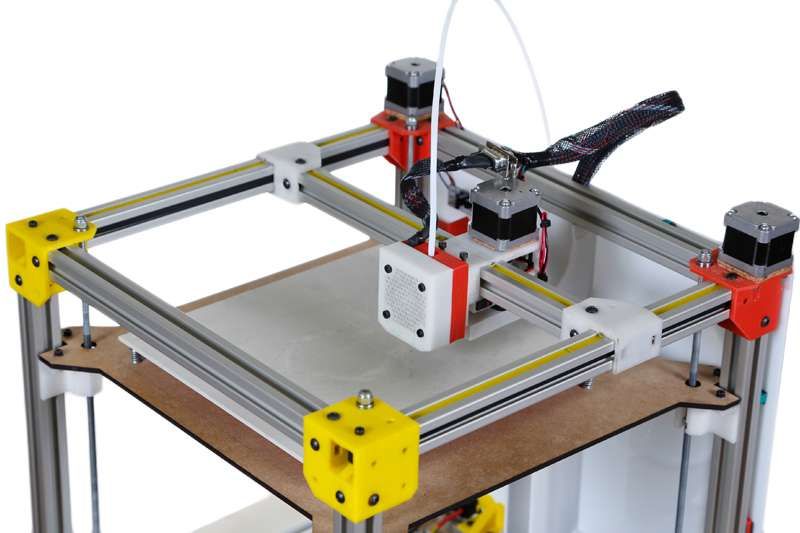
9. Yeggi
Just like STLFinder, Yeggi is a search engine that will allow you to find what you are looking for among more than 2 million STL files available on different platforms. However, Yeggi offers more filters and options than its competitor. You will be able to choose between free or paid files, popular models, recently added models, etc. It is probably the most popular search engine in the additive manufacturing market.
10. YouImagine
Created by the founders of Ultimaker, the YouMagine platform now gathers 16,000 free STL files and brings together thousands of designers and makers who want to share their ideas and invent together. The templates are mainly open-source, leaving the possibility for any user to modify designs if needed. YouMagine gathers all kinds of files, from small decorative figurines to functional prototypes like a wind turbine.
11. 3DShook
3DShook is a service offered in 7 different languages, which unlike other sites has a different business model, as it offers a subscription service on demand to access more than 6,000 models for printing. It has 42 categories, some of which are free when you sign up, but if you prefer to download models with more complexity or quality, 3DShook has an annual subscription of $ 25 dollars to download 40 models and access their CAD tools, or a premium option of $ 50 dollars that allows you to download up to 100 models from the catalog.
It has 42 categories, some of which are free when you sign up, but if you prefer to download models with more complexity or quality, 3DShook has an annual subscription of $ 25 dollars to download 40 models and access their CAD tools, or a premium option of $ 50 dollars that allows you to download up to 100 models from the catalog.
3DShook has over 40 STL file categories
12. 3DWarehouse
This website is a service offered by the Sketchup team, where the users can create and share models created with the software. This website is mainly dedicated to professionals, and is highly valued within sectors such as architecture or design, as it serves as a platform for the exchange of 3D models and as a possible source of income for some creators. In addition to the possibility of downloading models with different prices, the platform also allows add extensions to Sketchup to improve model quality.
Enjoy our list of the best websites to download free STL files? Let us know in a comment below or on our Facebook and Twitter pages! Don’t forget to sign up for our free weekly Newsletter, with all the latest news in 3D printing delivered straight to your inbox!
The 6 Best Places to Search for 3D Printing Models
As 3D printing patents expired, the industry exploded into the home.
An endless number of 3D models are now available on the internet, with everything from D&D characters to replacements parts for your washing machine.
With a host of design-sharing sites that exist, both paid and free, here’s what you need to know about where to look for the best models for 3D printing.
What to Look For: 3D Models, File Format, Slicers, and G-code
There are hundreds of thousands of 3D models online and it can get a little confusing.
Websites that cater to 3D printing models are particularly useful because the files available for download will be in the right format. Some sites will even check the designs of contributors, making sure that they are in fact printable.
As lots of these websites are community-based, you can read the comments or check out the photos of the completed project by other people.
Files need to be in the STL or OBJ format, so check this first before downloading. Once you have the files, use a ‘slicer’ software to convert your file to G-code.
Related link: The Ultimate Beginner’s Guide to 3D Printing
All you need to do then is copy the G-code file to your SD card and insert the card into your 3D printer. Good to go, right?
One thing to note is whether the 3D model has a creative license.
On the website Thingiverse, for example, the creative license is displayed under the heading License on the left-hand side of the model’s home page (below the tags), such as for the classic Benchy model.
Clicking on Creative Commons – Attribution – No Derivatives will open a link explaining what the condition of reproduction is, including for commercial use.
A lot of hours go into designing a 3D model. So making sure to attribute the designer, if you share your work publicly, is a good way to support them.
Depending on the site, the designer might include a link to where you can donate, or in some cases this option is built into the website. For sites that feature payment options, you can either pay directly for designs, or for a subscription to the website for further discounts.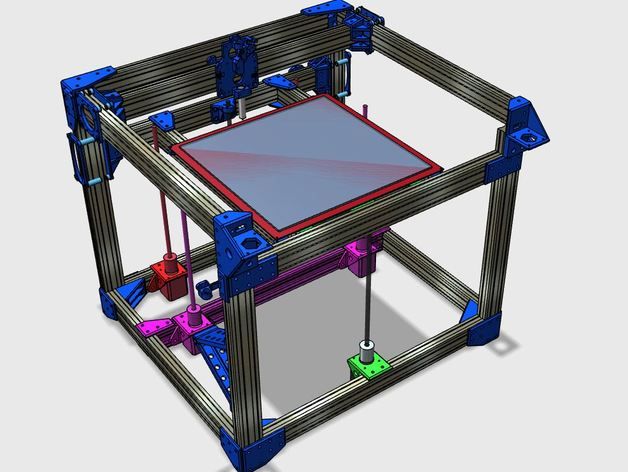
Each site is different, so check the percentage of profits that go to the designer if you choose to support them.
Now that you have an overview of what you are looking for, delve into the websites below for some of the best 3D printing models out there.
A popular and well-established site, Thingiverse began as a companion site for a DIY 3D printer kit-making company.
What is awesome about this site is its education section. Here you can find 3D printing projects related to a class subject (think T-Rex skeleton or Lego Renaissance figures).
Under the model page, you can then find complete lesson plans, activities, and background information on the subject. If you are a classroom teacher, this could be a great way to introduce 3D printing technology to young people.
Besides manufacturing 3D printers, Prusa Printers also hosts a website for design sharing.
Under a section called Makes, people can submit photos when they have completed the project, which is very useful if you want to check the quality of the design first.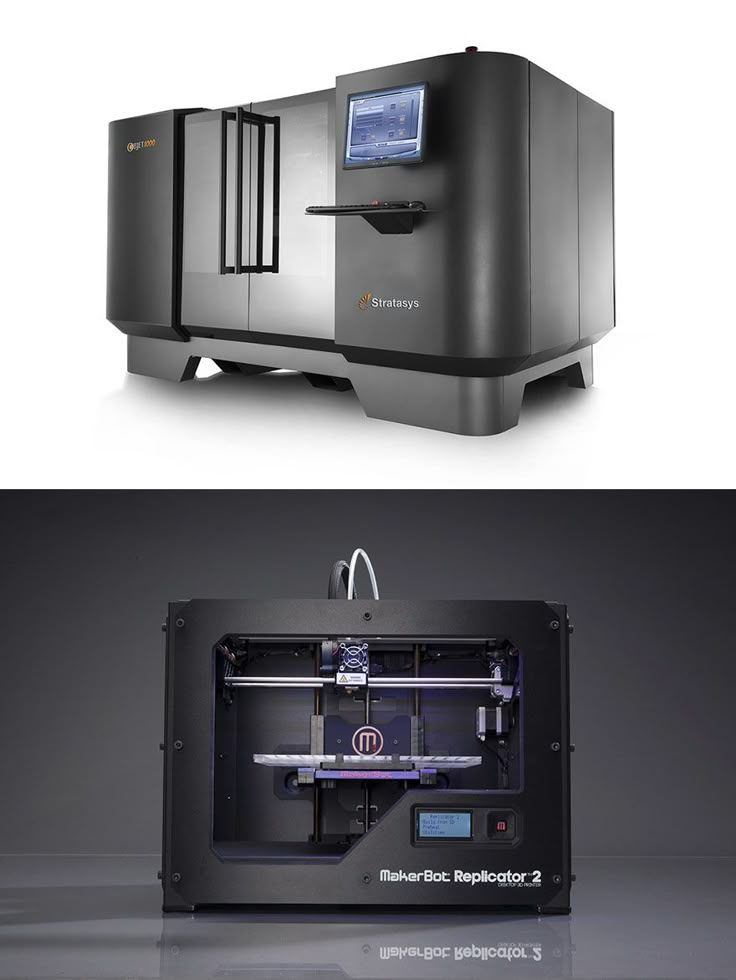
A unique feature of this site is a map that indicates where world events, workshops, or printing labs are located globally.
On YouMagine, designs can be gathered into collections, which is another way that you can search for new projects.
Collections range from 3D printing machine mods to models for medical masks.
Hitting the Download button is all you need to do to get a design. When you do, a popup will display giving you the option to donate to the designer if you choose.
Related link: Useful 3D Printing Ideas and Projects for Your Home
For something a little bit different, on Thangs you can search for models based on similar geometric shapes. To do this, upload a previous STL file you have to the search box, or simply type a shape into the search engine; e.g., cube.
On each model page, neat viewing options can be changed to display the model from different angles, and with render modes and colors, before downloading the files.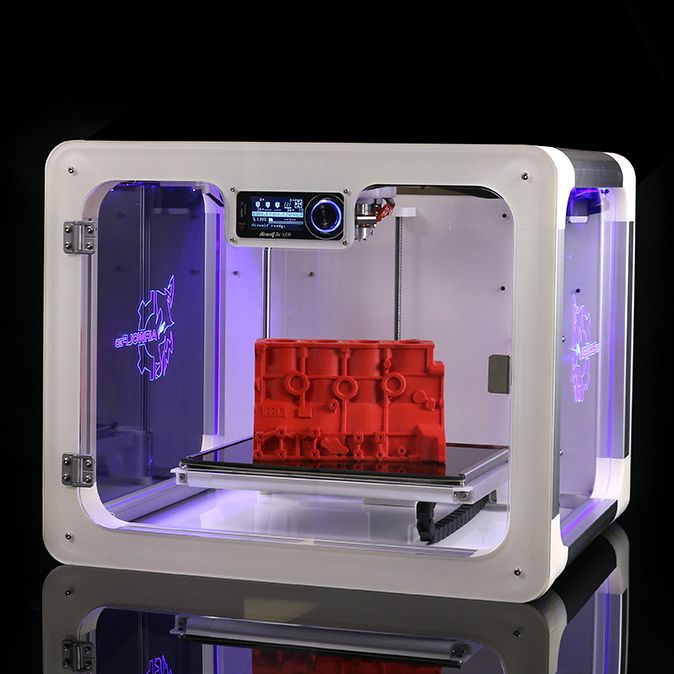
Interestingly, this website also allows you to limit your search for models only to the Thangs website, or else open the search to other sites on the internet.
Alongside a free STL file library, MyMiniFactory guarantees that each file is printable by checking it with software and making sure that it has been test-printed by its community.
In MyMiniFactory’s store, you can purchase designs to support artists, or opt for a paid subscription to the website to get discounts on designs, among other things like its in-house printing materials.
Image Credit: Creative Tools/flickrAnother site that allows you to pay for designs is Cults. It has both free and paid designs with added functions for donating to designers.
When browsing through the community designs, you will notice a lot of people using GIFs to display the 3D object in the library, which will help you to get a quick overview of the 3D model.
Cults also claims that the files available on its site are guaranteed to print, so you can at the least expect the correct file format.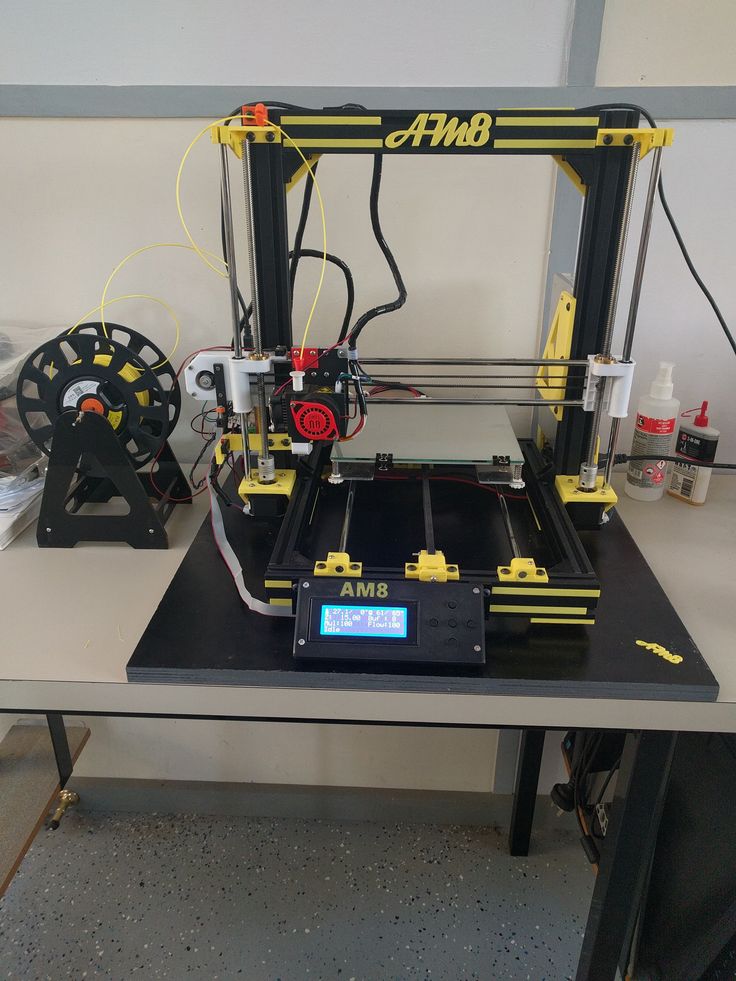
Did you know that NASA has a resource page dedicated to 3D printable models of space-related artifacts?
You can find models for famous robots like the Curiosity Rover and Perseverance, or detailed models of supernova remnants.
If you have a child who loves space, or you yourself want to combine two of your favorite hobbies, check out what’s in this NASA resource.
A Universe of 3D Models to Explore
Every design-sharing website is a little different from the next, but you are guaranteed to find a design you like on one of them.
Whether you find a model for free or paid, checking the creative license and uploading an image of your printed model will help to support the growing community of 3D printing enthusiasts.
And who knows, maybe one day you will be designing and uploading your own models? Competitions are becoming popular, so check your favorite website to see what you could win by building your own 3D model.
3D printer models
Looking for 3D printer models? The Internet is filled with sites that offer them for free.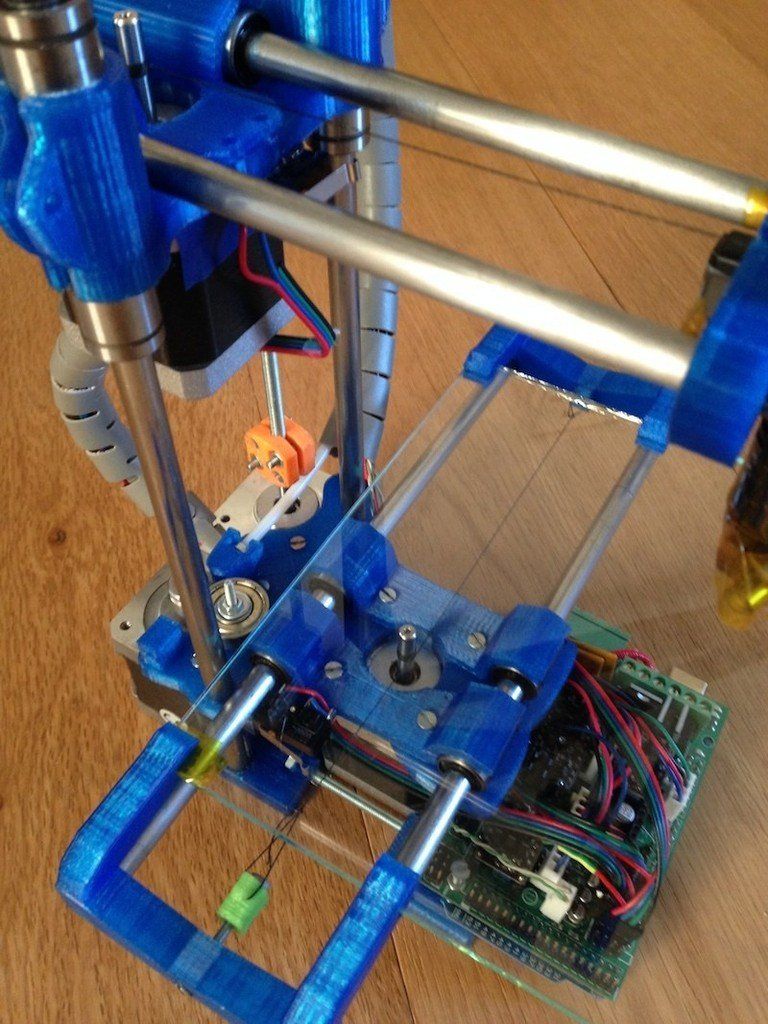 We have collected the TOP 10 catalogs that you can use to search and download free models in STL format. We hope you can find what you are looking for.
We have collected the TOP 10 catalogs that you can use to search and download free models in STL format. We hope you can find what you are looking for.
- Yeggi
- Yobi 3D
- STLfinder
→ myminifactory.com
My Mini Factory is a 3D model depository operated by iMakr, an online store that sells 3D printers and accessories. It also has one of the biggest 3D printer shops in Central London. The site contains 3D models designed by professionals, and all models stored on it are checked for quality. You can also make a request for the desired model, which their designers will create and put in the public domain. Billing itself as a 3D printing social network, MyMiniFactory is a thriving community of makers who love to showcase their creations. Users vote for the best models, which allows popular creations to rise to the top of the list and gain popularity. The site presents models that are stored on its social network, as well as outside it, for example, on the Thingiverse and YouMagine sites.
→ thingiverse.com
The most popular and famous site among 3D printer users, Thingiverse is owned by MakerBot Industries, the creator of the popular Replicator 3D printer series. The site allows users to store and share 3D model files that are used with 3D printers. It's a very popular site and has a large community of people hosting various categories of files on it. So if you're looking for "cool" printable stuff, Thingiverse is worth a visit. It is a portal designed to provide its users with ways to share their designs and to help print 3D creations. The site has a system that tries to find out what you like. The more you interact with the site, downloading and evaluating various developments, the better its recommendations will be.
→ 3dshook.com
Another online community for 3D printing hobbyists showcasing interesting 3D printer accessories, electronics and most importantly 3D models. The site contains many very interesting models of cars and buildings, as well as various add-ons and spare parts for your 3D printer. A huge catalog of paid and free models for a 3D printer. There are original unique products. Convenient search, navigation, rubricator. 3DShook has over 40 categories and adds over 100 new models to its collection every month. On 3DShook you can always find something for your home, animals, kids or something special for yourself.
A huge catalog of paid and free models for a 3D printer. There are original unique products. Convenient search, navigation, rubricator. 3DShook has over 40 categories and adds over 100 new models to its collection every month. On 3DShook you can always find something for your home, animals, kids or something special for yourself.
→ youmagine.com
YouMagine catalog for Cube series consumer 3D printers manufactured by 3D Systems. The site mainly offers various ways to buy 3D printer supplies and files, but it also has a number of cool free items available, mostly in the Kids section. Some of these elements can be customized by children using an online application. The company offers 3D modeling and publishing tools on its website for both hobbyists and professionals. The site offers a content warehouse where the community hosts and shares models. Registration is required to download files.
→ 123dapp.com
Autodesk 123D is a suite of computer-aided design (CAD) and 3D modeling tools aimed specifically at hobbyists. Along with the toolkit, Autodesk also has a website where users can record their designs and share them with other users. Many of these models can be downloaded and printed using Autodesk as a utility to interface with the MakerBot 3D printer. The goal of the Autodesk website is to "help engineers build products faster." The site offers tools to help them collaborate on their files. For the casual 3D printing enthusiast, the best part of the site is the large library of free files created by a community of over a million engineers. Registration on the site is required, but the number of files that are then available is worth it.
Along with the toolkit, Autodesk also has a website where users can record their designs and share them with other users. Many of these models can be downloaded and printed using Autodesk as a utility to interface with the MakerBot 3D printer. The goal of the Autodesk website is to "help engineers build products faster." The site offers tools to help them collaborate on their files. For the casual 3D printing enthusiast, the best part of the site is the large library of free files created by a community of over a million engineers. Registration on the site is required, but the number of files that are then available is worth it.
→ cgtrader.com
Being primarily a place to buy and sell a variety of 3D models (not necessarily just those designed for 3D printers), CGTrader does offer a selection of free models that can be used on 3D printers. The site has a system that tries to find out what you like. The more you interact with the site, downloading and evaluating various developments, the body will have better recommendations.
→ cults3d.com
A French community and marketplace where developers can share or sell their creations. The site has a collection of high quality models that you can download. Users can follow the work of the designers they like and get instant updates when a new creation is posted on the site. The site's name, Cults, is a backwards spelling of St. Luc, the patron saint of artists. The site also supports English. This is a relatively new community, so the number of its users is not very large yet.
→ instructables.com
The Instructables website is a community where users can share their DIY projects. This also includes products obtained using 3D printers. The site also provides explanations and instructions describing how to build 3D elements, and some designers take the time to answer questions from site members. Instructables allows users to store and organize their 3D printing projects. This is done to help them work together in the future.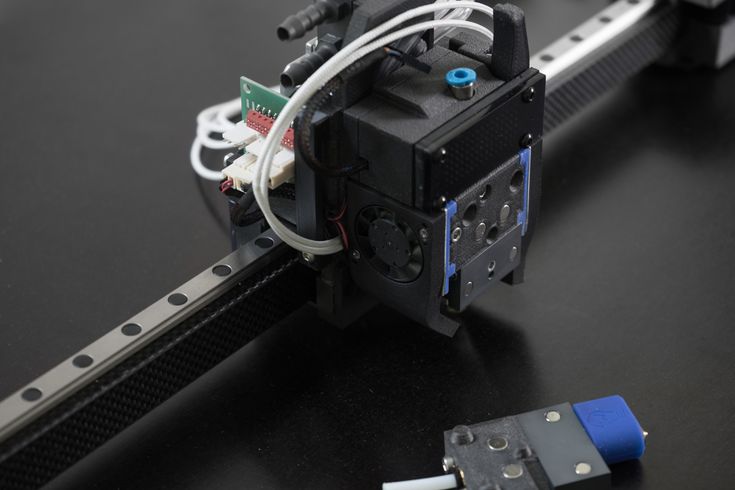 You can think of this site as a GitHub 3D printing site where users can share their files, discuss projects, and participate in them. The site also offers the ability to make a request, so if you can't find what you're looking for, you can ask the site's community about it.
You can think of this site as a GitHub 3D printing site where users can share their files, discuss projects, and participate in them. The site also offers the ability to make a request, so if you can't find what you're looking for, you can ask the site's community about it.
→ pinshape.com
Pinshape, a marketplace for 3D models, is similar in style (layout, look, and ability to capture likes) to the well-known site Pinterest. You can buy models from designers, or download them for printing yourself if they are offered for free. Pinshape allows users to host and share 3D model files on it. Basically, this site acts as an online store where you can buy 3D printed parts, or order your own 3D model to be printed. But if you look closely enough, you can find people who sell their products and also offer the files you need so you can print them yourself.
→ 3dfilemarket.com
A new and growing repository of 3D File Market models. All models are tested for suitability for 3D printing. You can download as many models as you like without registration, although you must provide your email address to access the 3D model files. This is a very simple site aimed at being a repository of model files for 3D printers, and nothing more. The basic design of the site allows users to put files on it for public access, and download files that they would like to use. The site contains many small, simple 3D models ready to be printed, as well as a good selection of everyday items and even spare parts for 3D printers.
All models are tested for suitability for 3D printing. You can download as many models as you like without registration, although you must provide your email address to access the 3D model files. This is a very simple site aimed at being a repository of model files for 3D printers, and nothing more. The basic design of the site allows users to put files on it for public access, and download files that they would like to use. The site contains many small, simple 3D models ready to be printed, as well as a good selection of everyday items and even spare parts for 3D printers.
Search engines for 3D models in various formats, including STL for a 3D printer. Use queries in English, these search services collect information about models from all over the Internet.
→ yeggi.com
Yeggi is a search engine that will browse major 3D printing sites to find files compatible with 3D printers. You can also browse some popular searches to get an idea of what the community is currently interested in.
→ yobi3d.com
When in doubt, use yobi3D to search for files that match the desired 3D printer. This tool is useful if you want to search for one thing across all sites at once. A very convenient format filter, fast search, high-quality previews and stl models prepared for 3D printing for printing.
→ stlfinder.com
This is another STLfinder that surfs the web looking for 3D printing. To select files compatible with 3D printers, he goes through many 3D modeling sites.
Building a DIY 3D printer at home: recommendations from personal experience
3D printing and assembly of 3D printers is my hobby and passion. Here I will not share detailed diagrams and drawings, there are more than enough of them on specialized resources. The main goal of this material is to tell you where to start, where to dig and how to avoid mistakes in the process of assembling a home 3D printer. Perhaps one of the readers will be inspired by applied engineering achievements.
Why do you need a 3D printer? Use cases
I first came across the idea of 3D printing back in the 90s when I was watching the Star Trek series. I remember how impressed I was by the moment when the heroes of the cult series printed the things they needed during their journey right on board their starship. They printed anything: from shoes to tools. I thought it would be great someday to have such a thing too. Then it all seemed something incredible. Outside the window are the gloomy 90s, and the Nokia with a monochrome screen was the pinnacle of progress, accessible only to a select few.
Years passed, everything changed. Around 2010, the first working models of 3D printers began to appear on sale. Yesterday's fantasy has become a reality. However, the cost of such solutions, to put it mildly, discouraged. But the IT industry would not be itself without an inquisitive community, where there is an active exchange of knowledge and experience and who just let them dig into the brains and giblets of new hardware and software.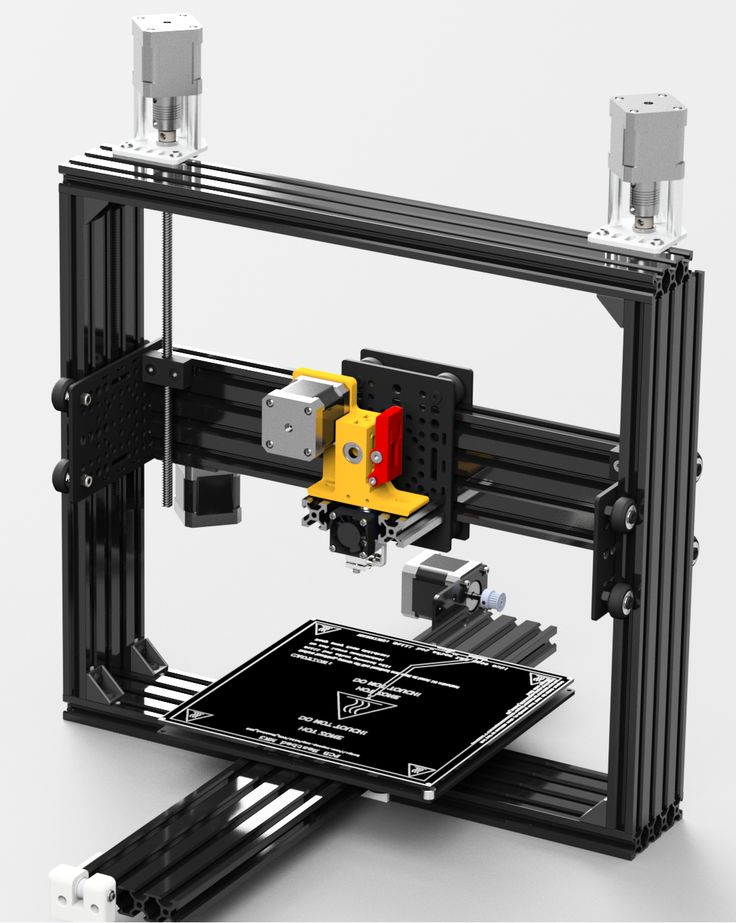 So, drawings and diagrams of printers began to surface more and more often on the Web. Today, the most informative and voluminous resource on the topic of assembling 3D printers is RepRap - this is a huge knowledge base that contains detailed guides for creating a wide variety of models of these machines.
So, drawings and diagrams of printers began to surface more and more often on the Web. Today, the most informative and voluminous resource on the topic of assembling 3D printers is RepRap - this is a huge knowledge base that contains detailed guides for creating a wide variety of models of these machines.
I assembled the first printer about five years ago. My personal motivation to build my own device is quite prosaic and based on several factors. Firstly, there was an opportunity to try to realize the old dream of having your own device, inspired by a fantasy series. The second factor is that sometimes it was necessary to repair some household items (for example, a baby stroller, car elements, household appliances and other small things), but the necessary parts could not be found. Well, the third aspect of the application is "near-working". On the printer, I make cases for various IoT devices that I assemble at home.
Agree, it is better to place your device based on Raspberry Pi or Arduino in an aesthetically pleasing "body", which is not a shame to put in an apartment or take to the office, than to organize components, for example, in a plastic bowl for food. And yes, you can print parts to build other printers :)
And yes, you can print parts to build other printers :)
There are a lot of scenarios for using 3D printers. I think everyone can find something of their own.
A complex part in terms of drawing that I printed on my printer. Yes, it's just a figurine, but it has many small elements
Ready solution vs custom assembly
When a technology has been tested, its value in the market decreases markedly. The same thing happened in the world of 3D printers. If earlier a ready-made solution cost simply sky-high money, then today acquiring such a machine is more humane for the wallet, but nevertheless not the most affordable for an enthusiast. There are a number of solutions already assembled and ready for home use on the market, their price range ranges from $500-700 (not the best options) to infinity (adequate solutions start from a price tag of about $1000). Yes, there are options for $150, but we, for understandable, I hope, reasons, will not dwell on them.
Yes, there are options for $150, but we, for understandable, I hope, reasons, will not dwell on them.
In short, there are three cases to consider a finished assembly:
- when you plan to print not much and rarely;
- when print accuracy is critical;
- you need to print molds for mass production of parts.
There are several obvious advantages of self-assembly. The first and most important is cost. Buying all the necessary components will cost you a maximum of a couple of hundred dollars. In return, you will receive a complete 3D printing solution with the quality of manufactured products acceptable for domestic needs. The second advantage is that by assembling the printer yourself, you will understand the principles of its design and operation. Believe me, this knowledge will be useful to you during the operation of even an expensive ready-made solution - any 3D printer needs to be serviced regularly, and it can be difficult to do this without understanding the basics.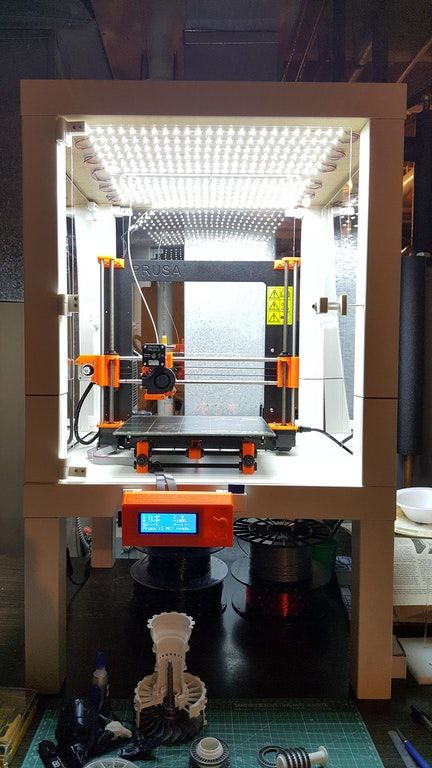
The main disadvantage of assembly is the need for a large amount of time. I spent about 150 hours on my first build.
What you need to assemble the printer yourself
The most important thing here is the presence of desire. As for any special skills, then, by and large, in order to assemble your first printer, the ability to solder or write code is not critical. Of course, understanding the basics of radio electronics and basic skills in the field of mechanics (that is, "straight hands") will greatly simplify the task and reduce the amount of time that needs to be spent on assembly.
Also, to start we need a mandatory set of parts:
- Extruder is the element that is directly responsible for printing, the print head. There are many options on the market, but for a budget build, I recommend the MK8. Of the minuses: it will not be possible to print with plastics that require high temperatures, there is noticeable overheating during intensive work, which can damage the element.
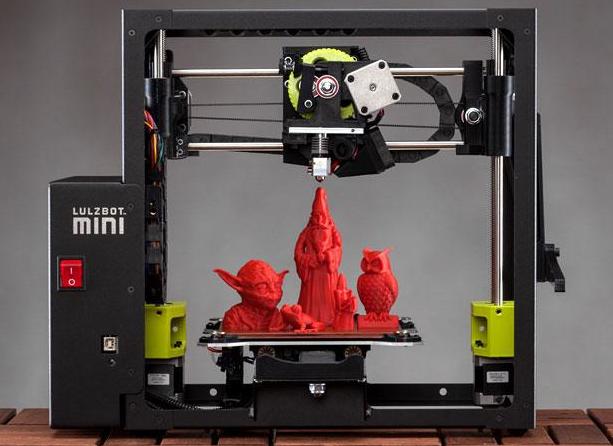 If the budget allows, then you can look at MK10 - all the minuses are taken into account there.
If the budget allows, then you can look at MK10 - all the minuses are taken into account there. - Processor board. The familiar Arduino Mega is well suited. I didn't notice any downsides to this solution, but you can spend a couple of dollars more and get something more powerful, with a reserve for the future.
- Control board. I'm using RAMPS 1.4 which works great with the Arduino Mega. A more expensive but more reliable board is Shield, which already combines a processor board and a control board. In modern realities, I recommend paying attention to it. In addition to it, you need to purchase at least 5 microstep stepper motor controllers, for example - A4988. And it's better to have a couple of these in stock for replacement.
- Heated table. This is the part where the printed element will be located. Heating is necessary due to the fact that most plastics will not adhere to a cold surface. For example, for printing with PLA plastic, the required surface temperature of the table is 60-80°C, for ABS - 110-130°C, and for polycarbonate it will be even higher.
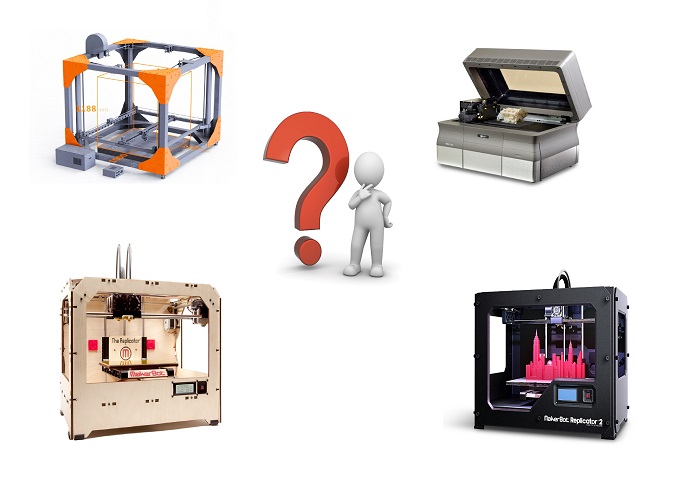
There are also two options for choosing a table - cheaper and more expensive. Cheaper options are essentially printed circuit boards with preheated wiring. To operate on this type of table, you will need to put borosilicate glass, which will scratch and crack during operation. Therefore, the best solution is an aluminum table. - Stepper motors. Most models, including the i2 and i3, use NEMA 17 size motors, two for the Z axis and one each for the X and Y axes. Finished extruders usually come with their own stepper motor. It is better to take powerful motors with a current in the motor winding of 1A or more, so that there is enough power to lift the extruder and print without skipping steps at high speed.
- Basic set of plastic fasteners.
- Belt and gears to drive it.
Examples of elements appearance: 1) MK8 extruder; 2) Arduino processor board; 3) RAMPS control board; 4) motor controllers; 5) aluminum heated table; 6) NEMA 17 stepper motor; 7) a set of plastic fasteners; 8) drive gears; 9) drive belt
This is a list of items to be purchased. Hardcore users can assemble some of them themselves, but for beginners, I strongly recommend purchasing ready-made solutions.
Hardcore users can assemble some of them themselves, but for beginners, I strongly recommend purchasing ready-made solutions.
Yes, you will also need various small things (studs, bearings, nuts, bolts, washers ...) to assemble the case. In practice, it turned out that using a standard m8 stud leads to low printing accuracy on the Z axis. I would recommend immediately replacing it with a trapezoid of the same size.
M8 trapezoid stud for the Z axis, the use of which will save you a lot of time and nerves. Available for order on all major online platforms
You also need to purchase customized plastic parts for the X axis, such as these from the MendelMax retrofit kit.
Most parts available at your local hardware store. On RepRap you can find a complete list of necessary little things with all sizes and patterns. The kit you need will depend on the choice of platform (we'll talk about platforms later).
What's the price
Before delving into some aspects of the assembly, let's figure out how much such entertainment will cost for your wallet. Below is a list of parts required for purchase with an average price.
Below is a list of parts required for purchase with an average price.
Platform selection
The community has already developed a number of different platforms for assembling printers - the most optimal case designs and the location of the main elements, so you do not have to reinvent the wheel.
i2 and i3 are key platforms for self-assembly printer enclosures. There are also many modifications of them with various improvements, but for beginners, these two classic platforms should be considered, since they do not require special skills and fine-tuning.
Actually, illustration of platforms: 1) i2 platform; 2) i3 platform
On the plus side of i2: it has a more reliable and stable design, although it is a little more difficult to assemble; more opportunities for further customization.
The i3 variant requires more special plastic parts to be purchased separately and has a slow print speed. However, it is easier to assemble and maintain, and has a more aesthetically pleasing appearance. You will have to pay for simplicity with the quality of printed parts - the body has less stability than i2, which can affect print accuracy.
You will have to pay for simplicity with the quality of printed parts - the body has less stability than i2, which can affect print accuracy.
Personally, I started my experiments in assembling printers from the i2 platform. She will be discussed further.
Assembly steps, challenges and improvements
In this block, I will only touch on the key assembly steps using the i2 platform as an example. Full step by step instructions can be found here.
The general scheme of all the main components looks something like this. There is nothing particularly complicated here:
I also recommend adding a display to your design. Yes, you can easily do without this element when performing operations on a PC, but it will be much more convenient to work with the printer this way.
Understanding how all components will be connected, let's move on to the mechanical part, where we have two main elements - a frame and a coordinate machine.
Assembling the frame
Detailed frame assembly instructions are available on RepRap. Of the important nuances - you will need a set of plastic parts (I already talked about this above, but I'd better repeat it), which you can either purchase separately or ask your comrades who already have a 3D printer to print.
Of the important nuances - you will need a set of plastic parts (I already talked about this above, but I'd better repeat it), which you can either purchase separately or ask your comrades who already have a 3D printer to print.
The frame of the i2 is quite stable thanks to its trapezoid shape.
This is how the frame looks like with parts already partially installed. For greater rigidity, I reinforced the structure with plywood sheets
Coordinate machine
An extruder is attached to this part. The stepper motors shown in the diagram above are responsible for its movement. After installation, calibration is required along all major axes.
Important - you will need to purchase (or make your own) a carriage for moving the extruder and a mount for the drive belt. Drive belt I recommend GT2.
The carriage printed by the printer from the previous picture after it has been assembled. The part already has LM8UU bearings for guides and belt mount (top)
The part already has LM8UU bearings for guides and belt mount (top)
Calibration and adjustment
So, we completed the assembly process (as I said, it took me 150 hours) - the frame was assembled, the machine was installed. Now another important step is the calibration of this very machine and extruder. Here, too, there are small subtleties.
Setting up the machine
I recommend calibrating the machine with an electronic caliper. Do not be stingy with its purchase - you will save a lot of time and nerves in the process.
The screenshot below shows the correct constants for the Marlin firmware, which must be selected in order to set the correct number of steps per unit of measure. We calculate the coefficient, multiply it, substitute it into the firmware, and then upload it to the board.
Marlin 9 firmware constants0148
For high-quality calibration, I recommend relying on larger numbers in measurements - take not 1-1. 5 cm, but about 10. So the error will be more noticeable, and it will become easier to correct it.
5 cm, but about 10. So the error will be more noticeable, and it will become easier to correct it.
Calibrating the extruder
When the frame is assembled, the machine is calibrated, we start setting up the extruder. Here, too, everything is not so simple. The main task of this operation is to correctly adjust the supply of plastic.
If underfeeding, the printed test item will have noticeable gaps, like test die 1. Conversely, the result will look bloated if plastic is overfed (dice 2)
Getting Started Printing
It remains for us to run some CAD or download ready-made .stl, which describe the structure of the printed material. Next, this structure needs to be converted into a set of commands understandable to our printer. For this I use the Slicer program. It also needs to be set up correctly - specify the temperature, the size of the extruder nozzle. After that, the data can be sent to the printer.
Slicer interface
As a raw material for printing, I recommend starting with regular ABS plastic - it is quite strong, products made from it are durable, and it does not require high temperatures to work with. For comfortable printing with ABS plastic, the table must be heated to a temperature of 110-130 ° C, and the extruder nozzle - within 230-260 ° C.
For comfortable printing with ABS plastic, the table must be heated to a temperature of 110-130 ° C, and the extruder nozzle - within 230-260 ° C.
Some important details. Before printing, calibrate the machine along the Z axis. The extruder nozzle should be about half a millimeter from the table and ride along it without distortion. For this calibration, a regular sheet of A4 paper inserted between the nozzle and the surface of the heated table is best suited. If the sheet can be moved with little effort, the calibration is correct.
Another thing to keep in mind is the surface treatment of the heated table. Usually, before printing, the surface of the table is covered with something that hot plastic sticks to well. For ABS plastic, this can be, for example, Kapton tape. The disadvantage of adhesive tape is the need to re-glue it after several printing cycles. In addition, you will have to literally tear off the adhering part from it. All this, believe me, takes a lot of time. Therefore, if it is possible to avoid this fuss, it is better to avoid it.
Therefore, if it is possible to avoid this fuss, it is better to avoid it.
An alternative option that I use instead of scotch tape is to apply several layers of ordinary light beer, followed by heating the table to 80-100 ° C until the surface is completely dry and re-applying 7-12 layers. It is necessary to apply the liquid with a cloth moistened with a drink. Among the advantages of this solution: ABS plastic separates from the table on its own when it cools down to about 50 ° C and is removed without effort, the table does not have to be peeled off, and one bottle of beer will last you for several months (if you use the drink only for technical purposes :)).
After we have collected and configured everything, we can start printing. If you have an LCD screen, then the file can be transferred for printing using a regular SD card.
The first results may have bumps and other artifacts - do not worry, this is a normal process of "grinding" the printer elements, which will end after a few print cycles.
Tips to make life easier (and sometimes save money)
In addition to the small recommendations given in the text above, in this section I will also give a short list of tips that will greatly simplify the operation of a 3D printer and the life of its owner.
- Do not experiment with nozzles. If you plan to immediately print from materials that require high temperatures, then it is better to immediately take the MK10 extruder. On MK8, you can "hang" special nozzles that support high-temperature conditions. But such modifications often cause difficulties and require special experience. It is better to avoid this fuss on the shore by simply installing the right extruder for you.
- Add starter relay for heated table. Improving the power supply system of this important part for printing with a starter relay will help solve the known problem of RAMP 1.4 - overheating of the transistors that control the power of the table, which can lead to failure of the board.
 I made this upgrade after having to throw away a few RAMPS 1.4s.
I made this upgrade after having to throw away a few RAMPS 1.4s. - Select the correct media diameter for printing. I recommend using 1.75mm plastic for MK8 and MK10. If we take plastic, for example, 3 mm, then the extruder simply does not have enough strength to push it at an acceptable speed - everything will be printed much longer, and the quality will drop. ABS plastic is ideal for MK8, MK10 will be able to produce products from polycarbonate.
- Use only new and precise X and Y guides. Print quality will be affected. It is difficult to count on good quality with bent or deformed guides along the axes.
- Take care of cooling. During my experiments with various extruders, the MK10 showed the best results - it prints quite accurately and quickly. The MK10 can also print plastics that require a higher print temperature than ABS, such as polycarbonate. Although it is not as prone to overheating as its younger brother MK8, I still recommend taking care of its cooling by adding a cooler to your design.
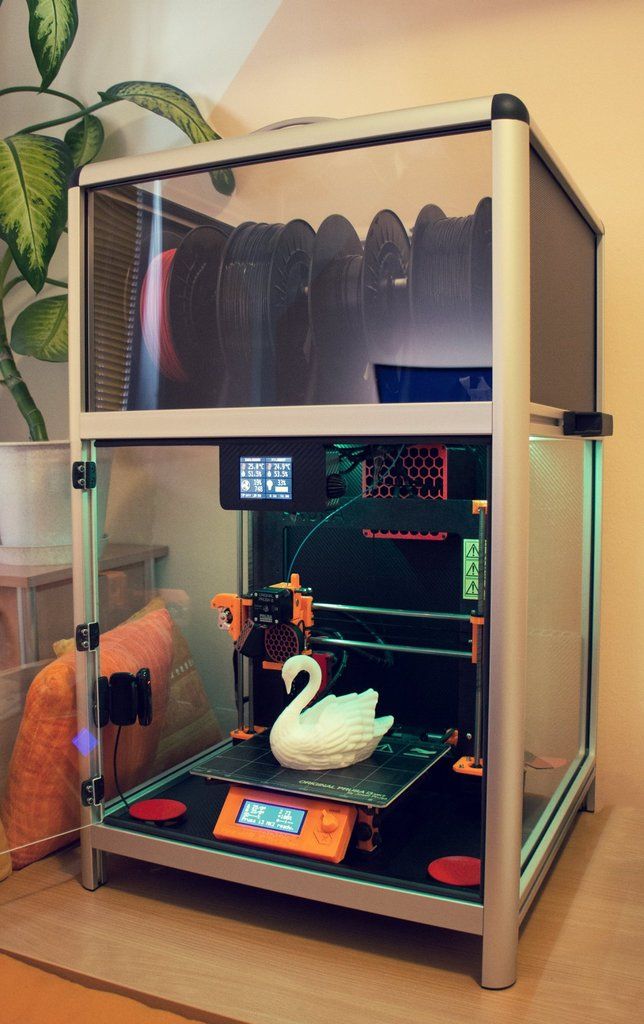 It must be permanently enabled, this option can be configured in Slicer. You can also add coolers to keep the stepper motors at an acceptable temperature, however, make sure that their air flows do not fall on the printed part, as this can lead to its deformation due to too rapid cooling.
It must be permanently enabled, this option can be configured in Slicer. You can also add coolers to keep the stepper motors at an acceptable temperature, however, make sure that their air flows do not fall on the printed part, as this can lead to its deformation due to too rapid cooling. - Consider heat retention. Yes, on the one hand, we are struggling with overheating of the elements. On the other hand, a uniform temperature around the printer will contribute to high-quality printing (the plastic will be more pliable). To achieve a uniform temperature, you can put our printer, for example, in a cardboard box. The main thing is to connect and configure the coolers before that, as described above.
- Consider insulating your desk. Heated table heats up to high temperatures. And if part of this heat leaves properly, heating the printed part, then the second part (from below) just goes down. To concentrate the heat from the table onto the part, you can perform an operation to insulate it.
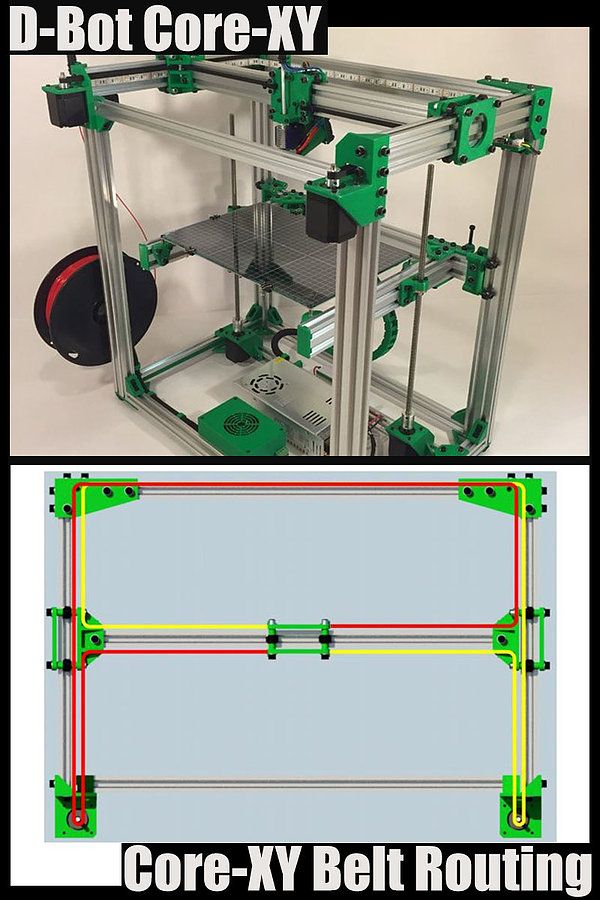 To do this, I simply attach a cork mouse pad to its bottom using stationery clips.
To do this, I simply attach a cork mouse pad to its bottom using stationery clips.
Pins
I am sure that during the assembly process you will encounter a number of difficulties specific to your project. Neither this text nor even the most detailed guides will insure against this.
As I wrote in the introductory part, the above does not claim the status of a detailed assembly manual. It is almost impossible to describe all the stages and their subtleties within the framework of one such text. First of all, this is an overview material that will help you prepare for the assembly process (both mentally and financially), understand whether you personally need to bother with self-assembly - or give up on everything and buy a ready-made solution.
For me, assembling printers has become an exciting hobby that helps me solve some issues in home and work affairs, take my mind off programming and do something interesting with my own hands. For my children - entertainment and the opportunity to get unusual and unique toys.


